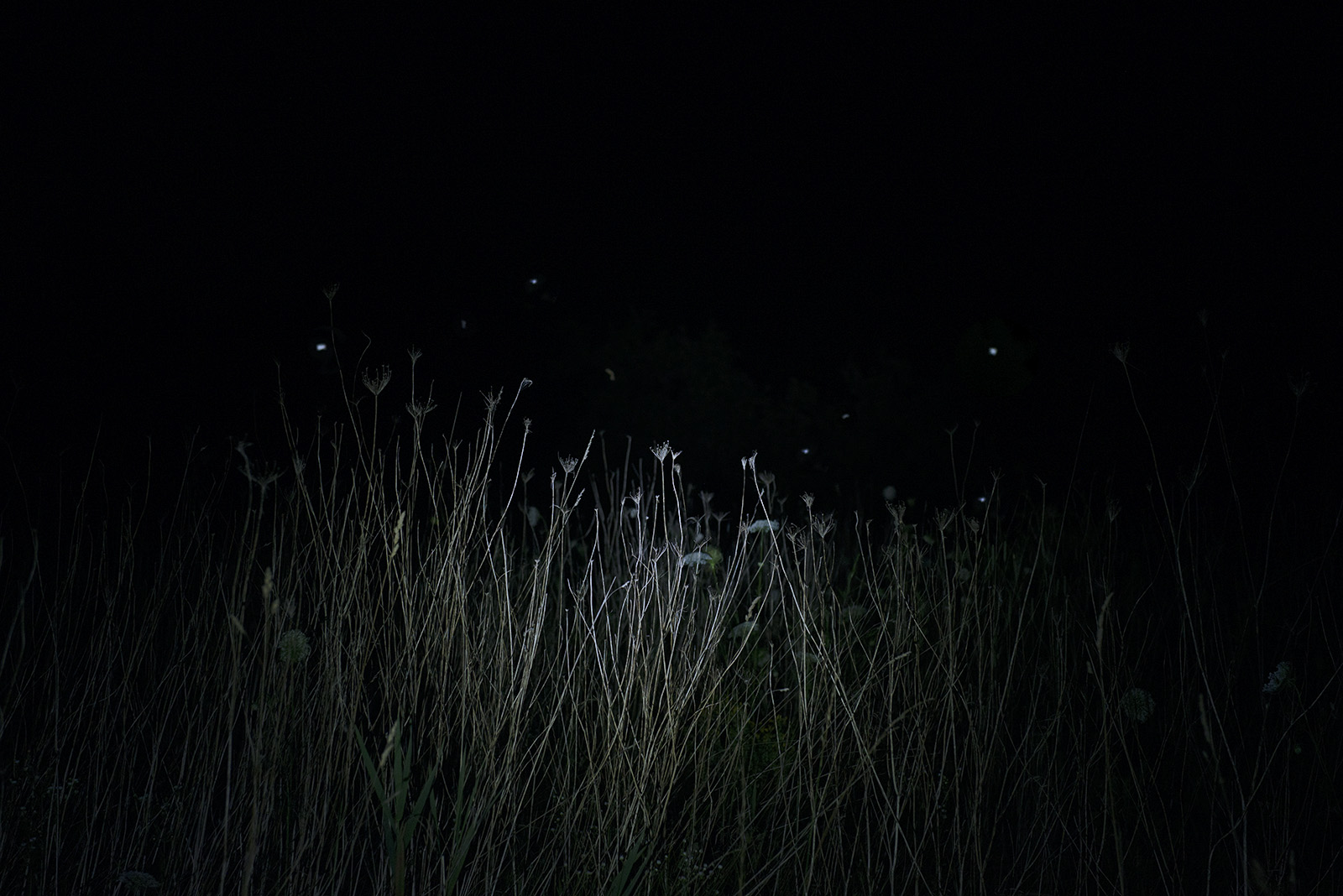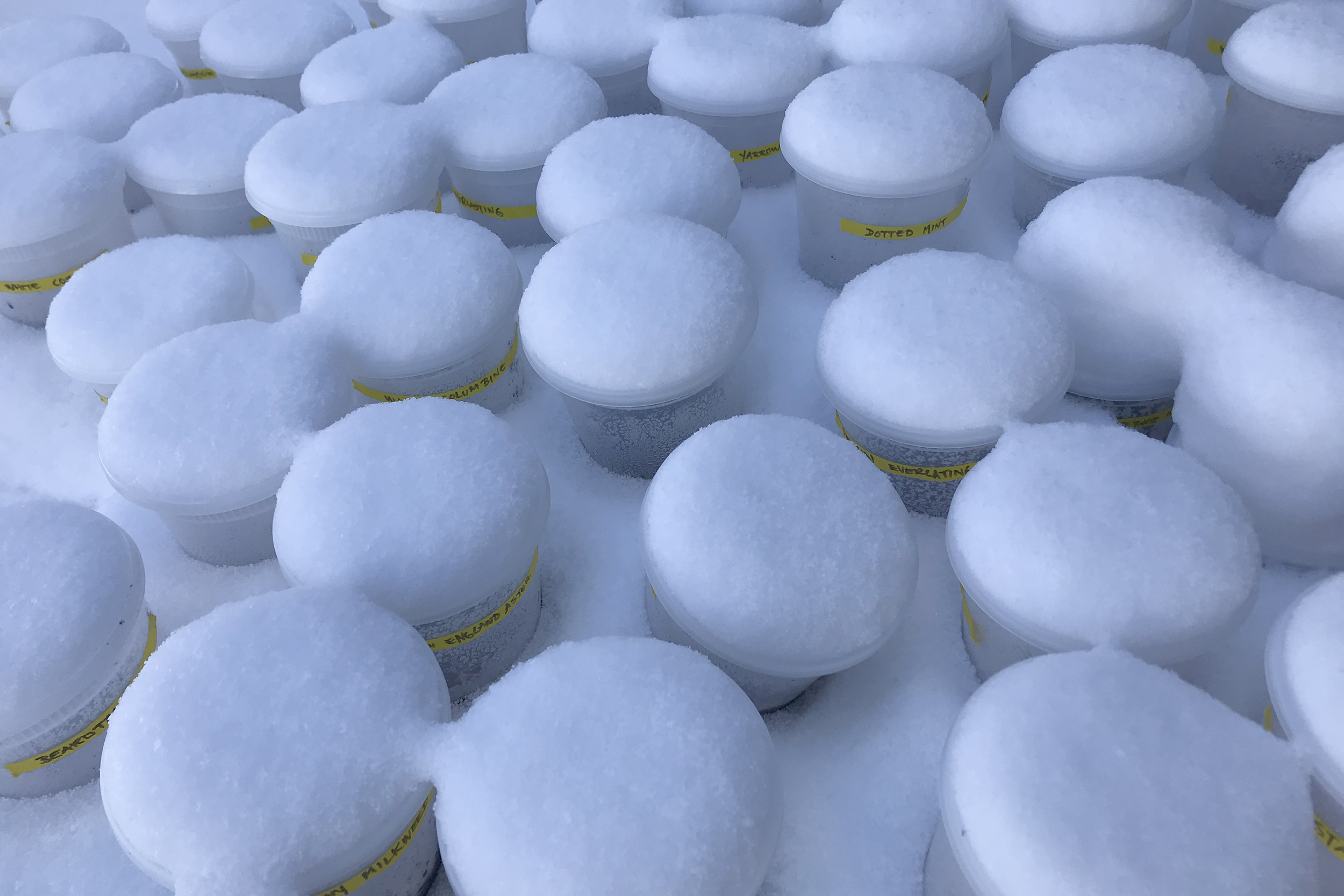WINTER SOW THE SUMMER NIGHTS OF BEINGS TO COME
A WINTER SEED PLANTING WORKSHOP TO BENEFIT NOCTURNAL POLLINATORS

Winter Sow the Summer Nights of Beings to Come was a small online workshop with participants in and near Guelph, Canada in February of 2021. I hope this documentation encourages others to add start thinking about adding summer flowers to their gardens or balconies that will nourish nocturnal pollinators who often get forgotten among the more visible daytime pollinators.
This workshop came from the intersection of a few things I’m working on, and as I made plans to winter sow flower seeds for my own garden and research, I decided to invite a few others to join me.
There is something about this winter season, where so many beings are at rest, while we humans are in lock down, that resonated with a way of growing that is in tune with this strange season. Planting seeds and then just letting them be feels fitting for this time of doing less and being more still.
I feel like there is something to learn in this.
Climate change is like the pandemic in that it asks us to do less, to slow the movement of material and energy through our lives. It seems to me that this is something that I, and perhaps many of us, need to practice, particularly after lives lived in precarious work conditions and in a culture structured by consumption, which are always asking us to do more and more.
Not doing can be hard. It looks like nothing. It is often invisible. It is not easy to promote as an accomplishment. You can’t really be the author or hero of something not done. It can take time and repetition before not doing becomes apparent. And yet, I think not doing is a powerful and redemptive force.
One of the reasons I want to grow these flowers is because of my appreciation for nocturnal pollinators: the beings we rarely see because they occupy such different sensory worlds to our own, moving in darkness, often completely unregistered by us.
I think too about the light that spills out from our lives and the way it disorients nocturnal beings whose darkness we take away, not an intentional harm but an impact nonetheless. And I think about how in doing less we slow our wakes and move a bit more gently through the world leaving more space for others.
I’m not sure what this all amounts to, which is why I invite you into conversation with these questions. Of course there are many moments where energetic, decisive action is important. But between those moments, I’m beginning to think we need to practice how to be still, to rest, to listen, to be receptive.
I welcome your thoughts…
↓
- Seeds from cold hardy annuals or plants perennial to your growing zone
- Clear plastic containers, such as milk/juice jugs, salad clamshells, etc.
- Potting soil or seed starting mix
- Scissors and something to make holes in containers with
- Strong tape, like duct tape
- If your container is tall (like a milk jug, for example) cut it in half, leaving about 10cm attached, so it hinges open.
- Make holes in the bottom for drainage, and a few in the top for ventilation. You can use a drill, a nail and hammer (though test this first as some plastics are too brittle), or a hot tool such as a heated knife or soldering iron.
- Add 10-15cm of soil. Water it lightly so that it is damp.
- Carefully place your seeds on top of the damp soil. Try to space them out to make it easier to separate the seedlings when transplanting them.
- If the seeds need to be covered, add the appropriate amount of soil on top.
- Very gently water again if needed.
- Make sure to label your containers.
- Close the container if it has a top. Or, if you have a cut container, tape it back together using duct tape or similar.
- Move the containers outside, ideally in the sun.
- Leave them be until spring.

Step 3: IN THE SPRING
- The seeds will know when its time to start sprouting. Some will start sooner than others.
- All you need to do is keep the soil moist and ensure the seedlings don’t overheat on very warm days by removing the lids.
- If there is danger of a cold night, put the lids back on.
- As the seedlings get taller, leave the tops of the containers off.
- Once the seedlings are about 10cm tall, you can transplant them into your garden or into a larger container.
- Remember some of the plants may take two years to produce flowers.

↓
Plants that are good for other pollinators also tend to be good for nocturnal pollinators like moths. They are especially attracted to white and pale coloured flowers, as they are easier to see in the dark; very fragrant flowers, as this also helps in locating them; and flowers that open at night, who are do so to specifically attract nocturnal pollinators.
Some of the places I get my seeds are:
